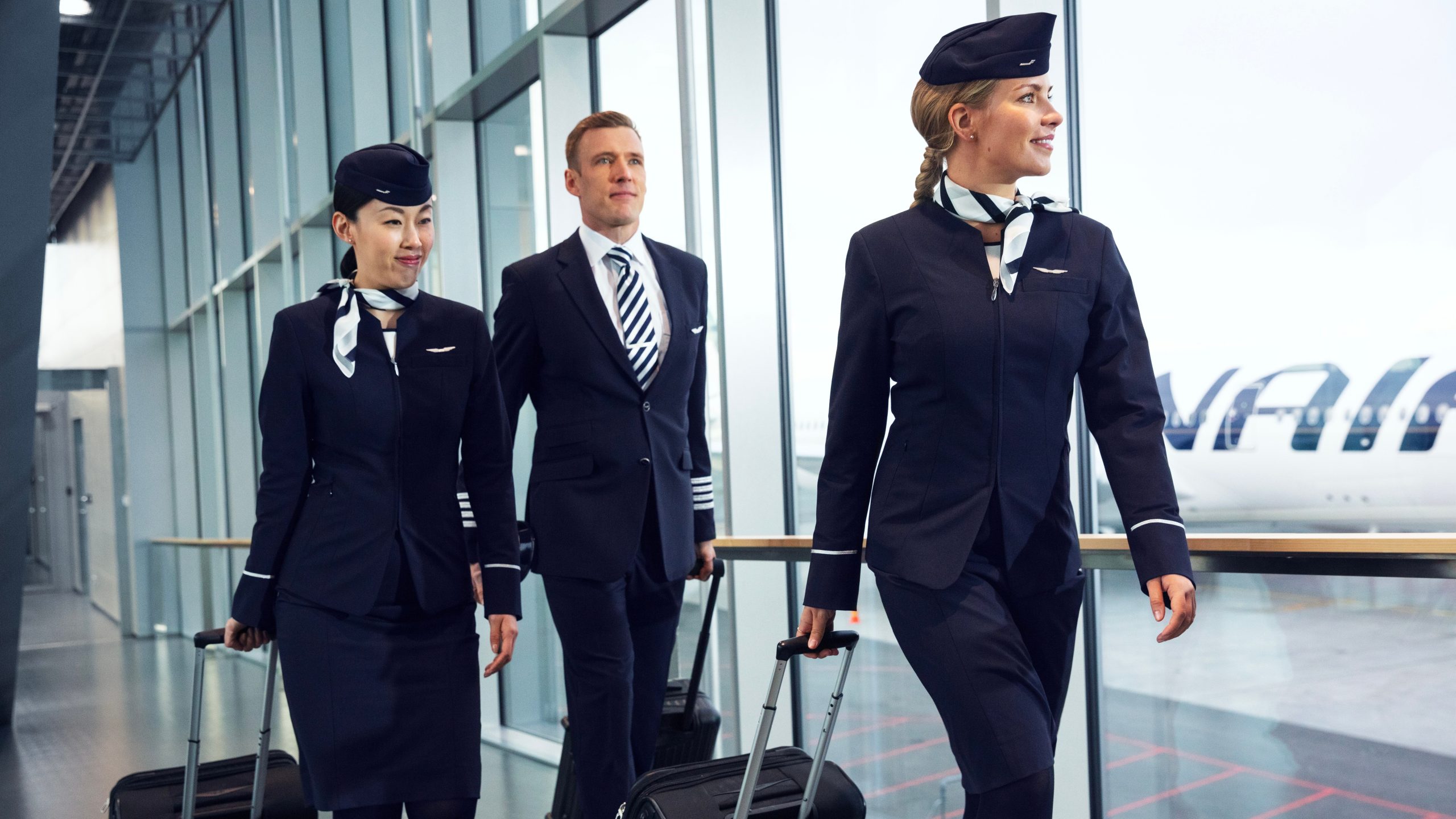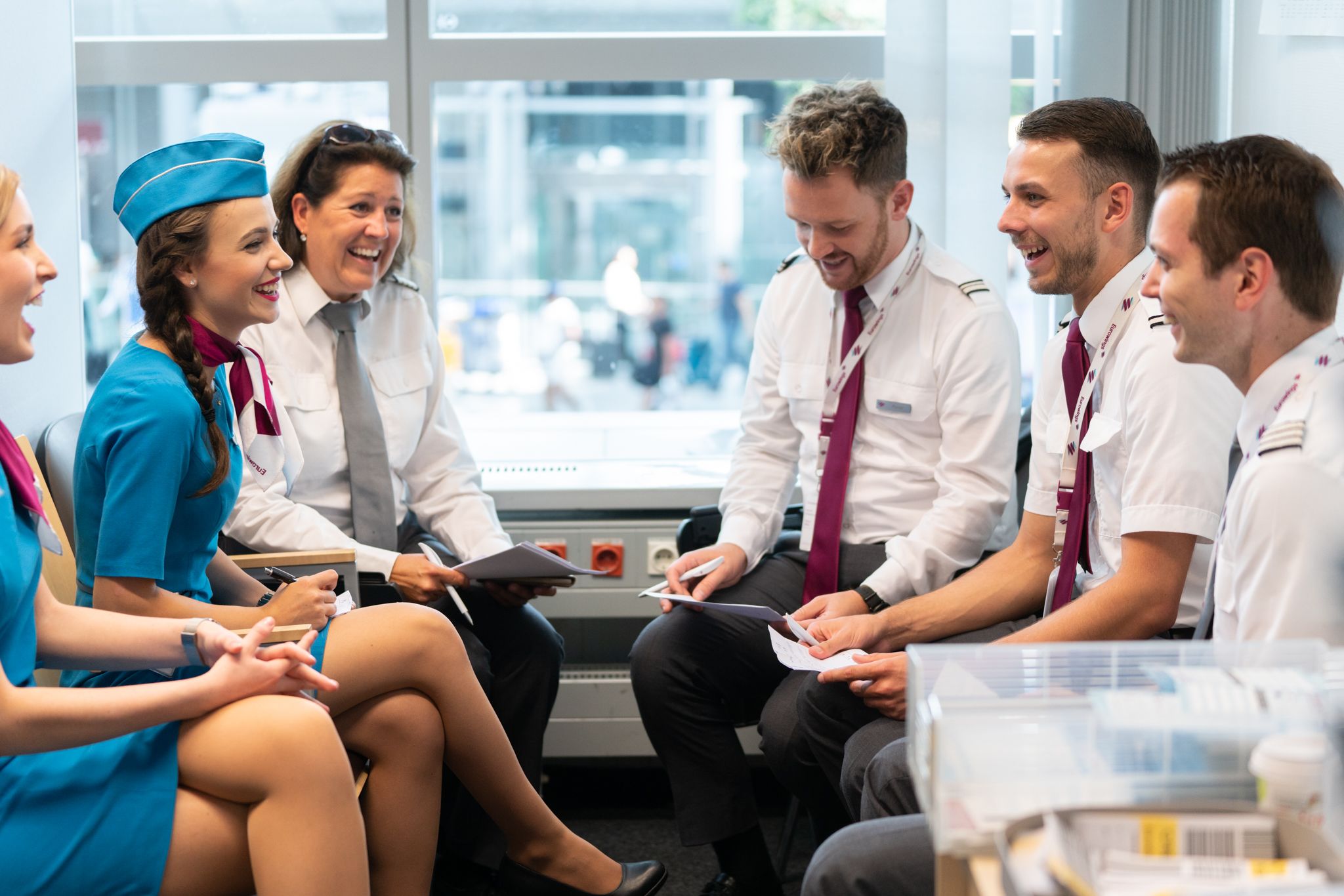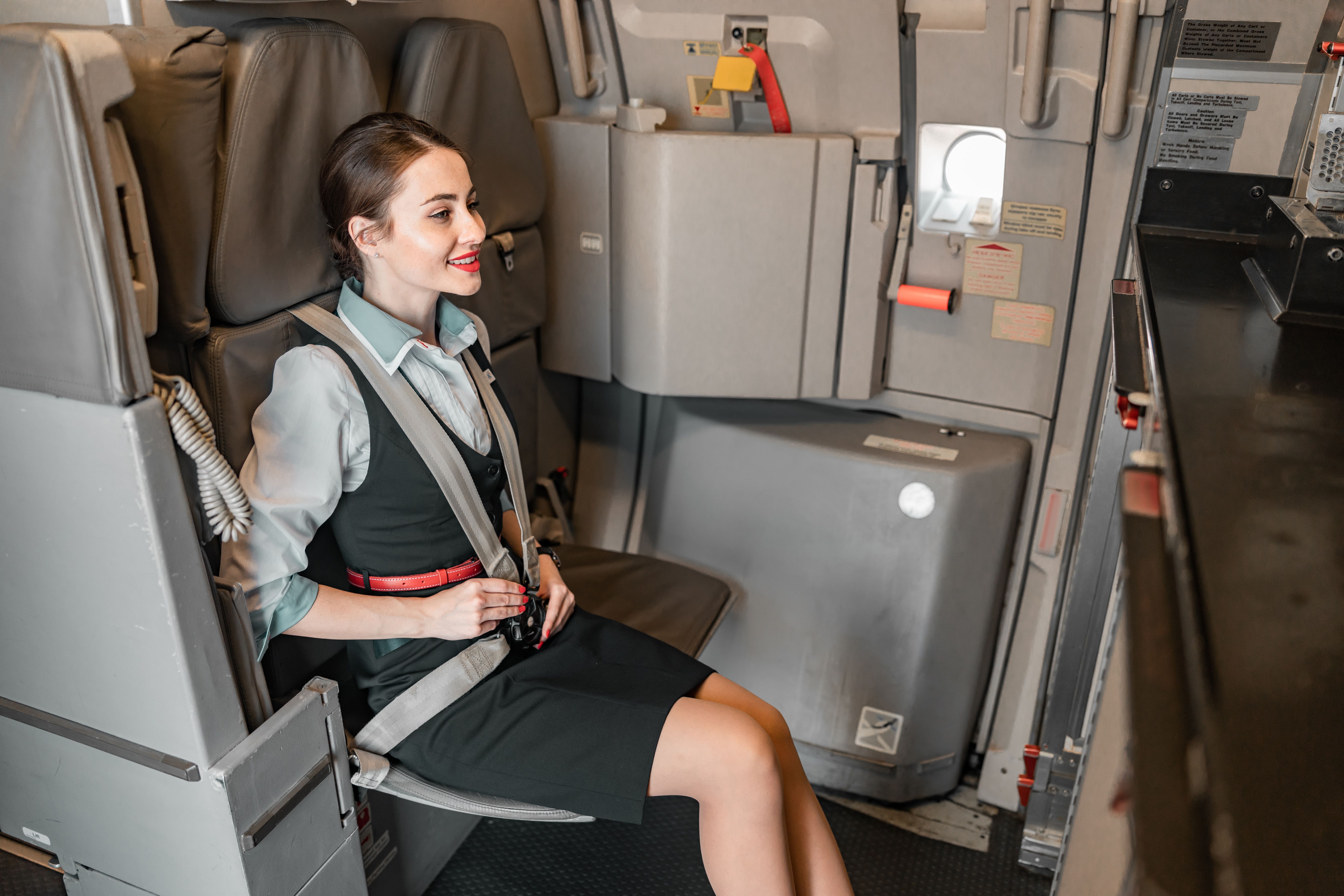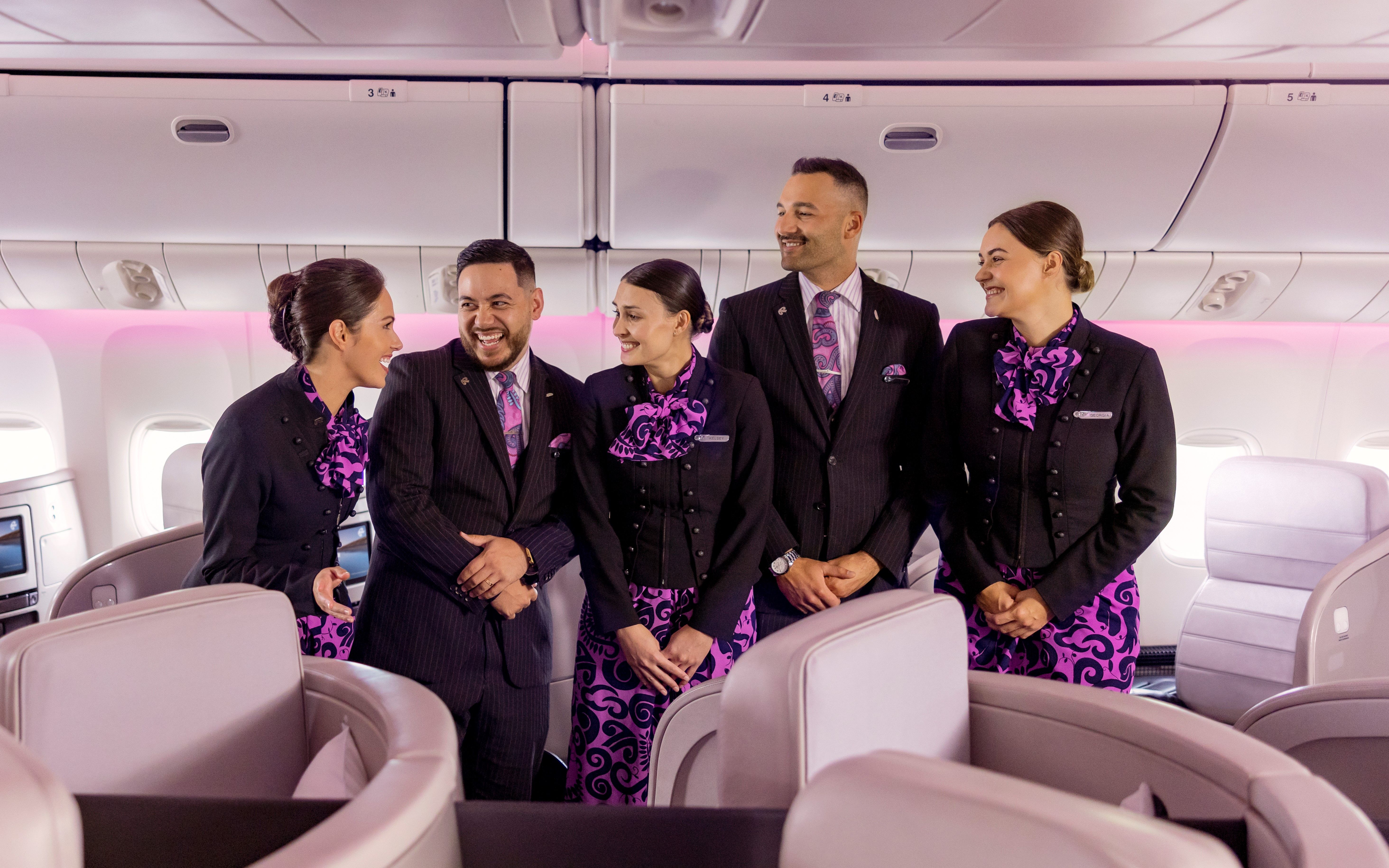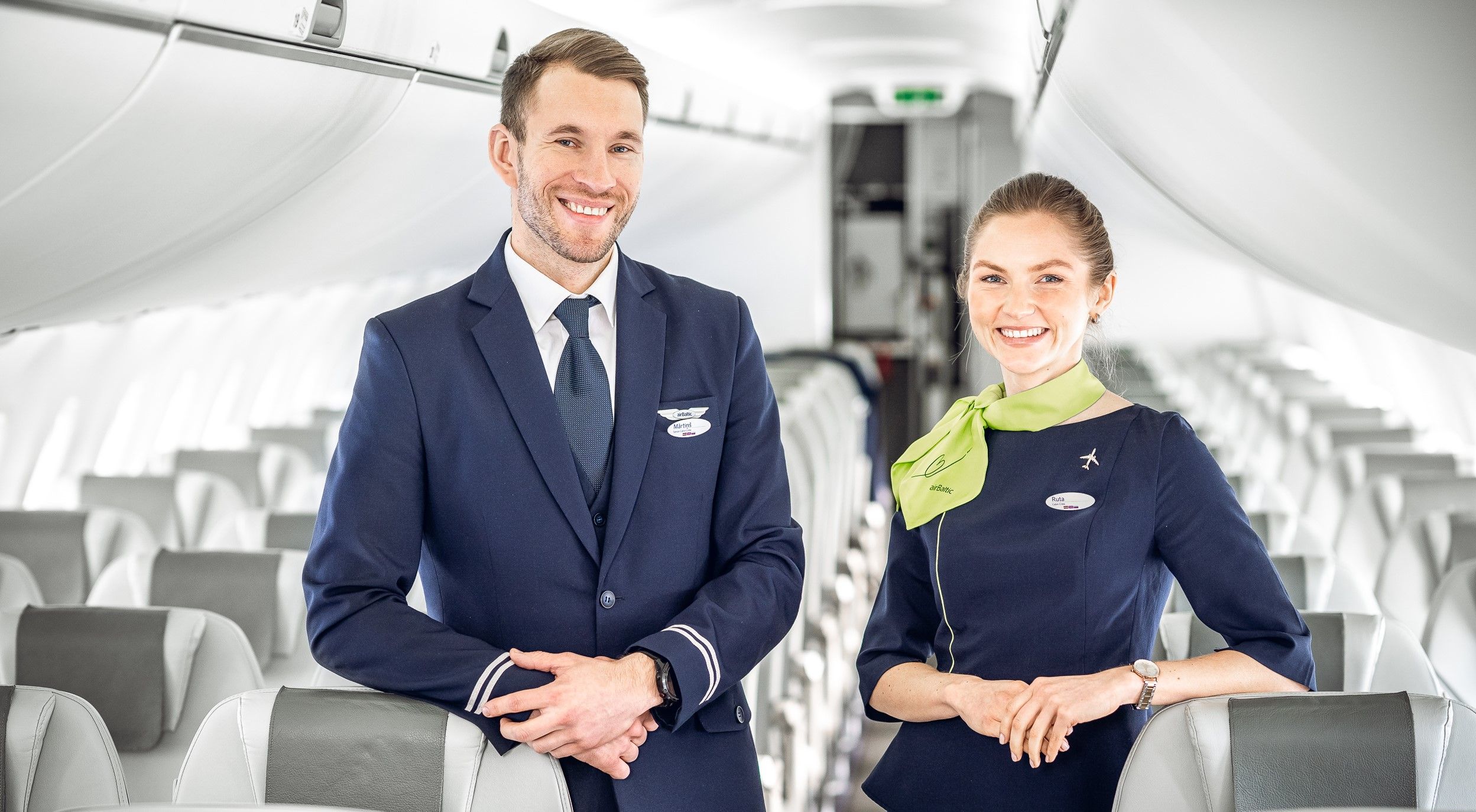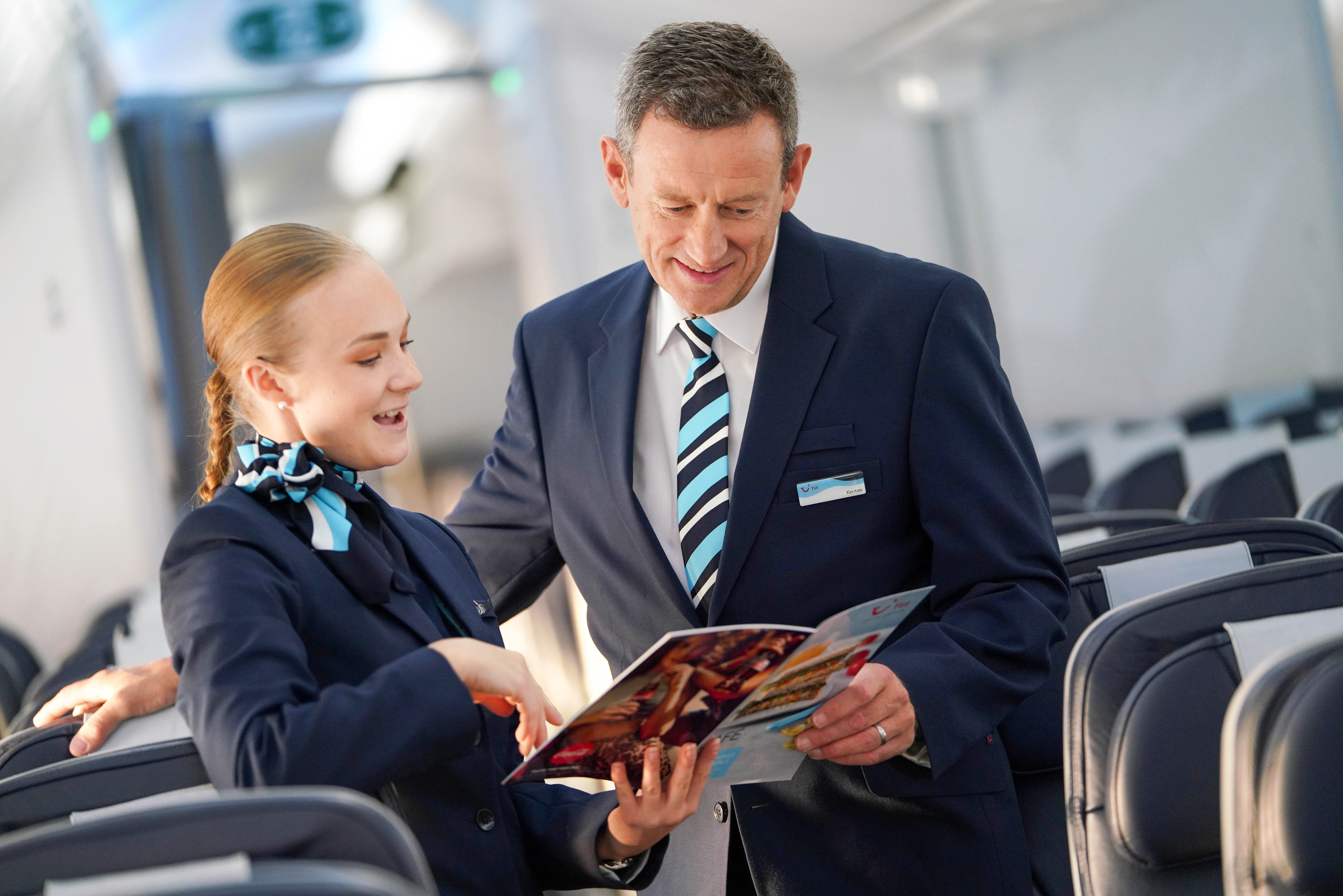Summary
- Flight attendants must know and follow all procedures and safety rules.
- Safety and security checks before and during flights are necessary to ensure all equipment is in the correct condition.
- Teamwork, communication, and situational awareness are absolutely essential for emergency prevention.
As cabin crew, we are well-used to following rules and procedures; it is essential to make every flight safe and efficient. But what are the most important safety rules that cabin crew live by every single flight?
1 Know the procedures
During cabin crew training, it is important to absorb all information, and there is a lot to learn. We practice our procedures over and over again until they become second nature. It is vital, especially in an emergency, to be immediately able to act without stopping to think. Cabin crew are the first responders to any event that may happen on the aircraft, and we are tested every year to check our competency.
Photo: Eurowings
Before every flight, we have a pre-flight briefing and are asked questions about safety and emergency procedures, safety equipment, and first aid and medical emergencies. If we don’t know the correct answers, we are taken off the flight and can lose our jobs in some cases. So, it is always important to know the crew manual inside out, review it, and update it as necessary.
2 Safety and security checks
Once onboard the aircraft, various checks need to be completed before every flight. These include security checks and safety equipment checks. All equipment related to the cabin crew role has to be inspected; locations have to be correct, the amounts must be right, and the equipment condition must be superb. Every item has to be ready to use in an emergency when every second counts. You would not want to have a fire onboard just to find out your extinguisher is empty, or see that there is no life jacket in case of an emergency landing on water.
Photo: Airways concept/Shutterstock
Cabin crew must also complete cabin secure checks before take-off and landing to ensure that everything is safe. During take-off and landing, we go through our 30-second silent review. This is a process of mentally going through every procedure in our heads should something happen during take-off or landing and we have to evacuate. After our flight, we will run through security checks once again and look out for missing or lost items.
3 Teamwork and communication
Teamwork and communication are crucial when working on an aircraft. We work with strangers pretty much every day, so getting along is important to make a good flight. Cabin crew work in very small spaces and are used to moving around each other, completing all those essential tasks. One crew member could be setting up a bar cart while the other is checking that the meals are cooked, and yet another is answering a call bell. All tasks are equally shared, and we are assigned a position at the briefing.
Photo: Air New Zealand
Everyone must work well together and be able to take on each other’s tasks at a moment’s notice. Although every day is different, the routine is pretty much the same. Everyone knows what to do and when and what is expected of them. If one crew member doesn’t pull their weight, then the whole team suffers. This also applies to emergency situations; we are required to work as a team and often have assigned roles and duties that we must follow.
4 Situational awareness
Crew resource management (CRM) is something that we learn about during training. It is an essential part of communicating onboard, especially reporting anything unusual in the cabin to the senior and the flight crew. It could be something like a distinctive smell, sound, or movement. In the past, so many accidents occurred because of a lack of CRM. By being situationally aware, we have the chance to stop a crisis before it starts.
Photo: airBaltic
Cabin crew have to be the eyes and ears in the cabin and be situationally aware. During boarding, cabin crew are looking for certain passenger behaviors and potential issues during the flight. That could be a drunk passenger or someone who is showing threatening behavior. During flights, we might be looking for signs of people being drug mules or who are human trafficking or if a passenger is becoming disruptive.
5 Cabin pressure
Working under stress is something cabin crew must be able to cope with. The work day can be long, and there could be delays or difficult passengers. The constraints of working on an aircraft can be overwhelming, and along with fatigue or jet lag, it can take its toll. There may well be time constraints, too, on short flights. As a rule, cabin crew are usually ready to deal with any situation and work under pressure well. They also understand how unique the cabin crew role is, so they are very understanding.
Photo: TUI UK
Of course, in an emergency, cabin crew have to remain calm and take the appropriate action. Our training enables us to follow procedures precisely and make every flight as safe and efficient as possible. We also hope our flights are ‘uneventful’ and nothing significant happens. Cabin crew have to deal with the unexpected from time to time; things like medical emergencies, go-arounds, and bird strikes, for example. Real emergencies are quite rare, thankfully, but we still prepare for them every day we fly.

